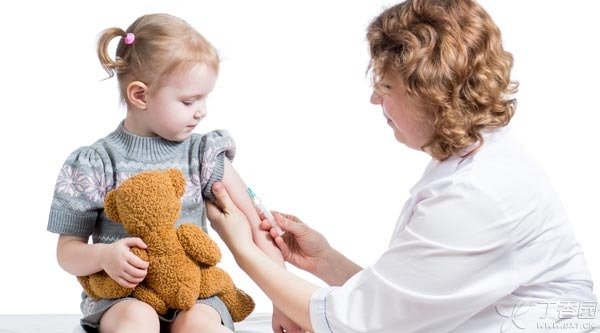
Similar news can often be seen: novice mothers let their children sleep on their stomach, resulting in the suffocation and death of baby girls less than 3 months old.
While sighing, searching for keywords like [baby sleeping and dying] found that this tragedy has never stopped. Therefore, today, let’s talk about this terrible disease: sudden infant death syndrome.
Invisible Killer: Sudden Infant Death Syndrome
Sudden Infant Death Syndrome (SIDS) is an internationally recognized definition of sudden and accidental death of an infant, and the cause of death cannot be determined after autopsy.
In the United States, about 4,000 infants die of SIDS every year. The reported incidence rate of generalized SIDS in Japan is 0.4 ~ 0.5 ‰, i.e. About 50 out of 100,000 infants die as a result.
The onset age of SIDS is generally between 2 weeks and 1 year old after the baby is born.
Although the incidence rate is much lower than other infantile diseases, However, the terrible thing about SIDS is that there is no obvious abnormality in the onset of the baby. Almost all of them occur during the sleep of the baby and the mortality rate is extremely high. SIDS often occurs from late night to early morning, autumn and winter and early spring. Most of the babies are already dead when they are found. Even sometimes, the baby sleeps beside the mother, but the mother does not feel any abnormality and the baby dies inexplicably.
The cause of SIDS is still unclear. Researchers preliminarily speculate that The overlap of several factors may be more likely to lead to this tragedy, including the baby’s own fragile constitution, critical development period and external stressors. For example, lighter premature infants may develop SIDS when exposed to external stimuli such as drastic environmental changes and shock during some critical development periods.
 You will find too much news about sudden infant death when searching the web page.
You will find too much news about sudden infant death when searching the web page.
According to a technical report released by the American Academy of Pediatrics (AAP), we have summarized the following 10 suggestions for parents’ reference, hoping to avoid some dangerous situations as much as possible.
How to prevent sudden infant death?
1. Sleeping on your back, not in the same bed
Supine is the only sleeping position recommended by AAP.
Unless the baby has learned to turn 180 degrees, Lying on your side or prone is not safe for your baby. Especially for premature infants, you should let them use your supine sleeping position as soon as possible. Give up the so-called “prone can sleep out a small face” argument. Sleeping position does affect the baby’s head shape, but it is also temporary, and will slowly recover later, but it has no effect on the face shape. Face shape is more related to heredity, diet and tooth development.
In addition, it is also recommended that parents and their babies sleep in the same room, but not in the same bed.
According to AAP statistics, parents and babies can reduce the risk of SIDS by 50% in the same room and different beds. Even if the baby is carried to the parents’ bed due to lactation and other reasons, when the parents plan to fall asleep, the baby should be put back into his crib and let the crib be close to the parents so as to pay attention to the baby’s situation.
 Supine is the only recommended sleeping position for babies.
Supine is the only recommended sleeping position for babies.
Step 2: Pacifier
When the baby sleeps or takes a nap, the use of pacifiers can reduce the risk of SIDS by 50-60%. However, it should be started after helping the baby to establish a good feeding rule.
3. Qualified Sleep Apparatus
Parents must use cribs, baby carriages and other baby products that have passed the national quality certification, and do not use car-mounted child safety seats instead of cribs at home.
4. Breastfeeding
Breastfeeding is of great benefit to both mother and child, especially to increase the immunity of the baby, thus avoiding secondary SIDS caused by infection.
However, breast-feeding mothers are also reminded that if the baby is carried to the big bed during breast-feeding, when the mother is ready to sleep, she must put the baby back into her small bed. Although sleeping in the same bed with the baby is convenient for mothers to breast-feed, this behavior will also increase the risk of sudden death of the baby.
5. Vaccination
It is recommended that parents plan to immunize their babies. According to the results of the study, vaccination can halve the risk of SIDS. This may be because vaccinated babies are less likely to get sick, while sick babies are weaker and have a higher risk.

These practices increase the risk of sudden death
Step 1 Sleep in the same bed
Considering the convenience of breast-feeding and the increase of intimacy, it is very common for mothers and infants to sleep in the same bed. According to the results of the US survey, 45% of parents sleep in the same bed with their babies.
According to epidemiological studies, sleeping in the same bed between mothers and infants not only cannot avoid SIDS, but also increases the risk of babies if there are any of the following conditions:
One or both parents smoke;
Parents share a bed with their babies after drinking.
The baby is less than 3 months old;
The baby sleeps on a particularly soft bed.
There are many soft pillows, bedding and other articles on the bed.
Many adults share a bed with their babies.
2. Soft bedding
Parents often worry that their babies may feel uncomfortable sleeping on a solid bed, or in order to prevent their babies from falling from the bed, they often use very soft bedding such as pillows, quilts and blankets when their babies sleep.
These bedding products are not only not beneficial to the baby’s physical development, but also can increase the incidence of SIDS 4 times during sleep! If the baby sleeps on a soft surface in a prone position, the incidence of SIDS will increase by 20 times!
3. Exposure to alcohol and tobacco
Smoking during pregnancy is one of the main factors leading to SIDS in infants.
Mothers should try to avoid smoking and drinking before and after childbirth, and also try to avoid second-hand smoke or even third-hand smoke around pregnant women and infants. It is estimated that if all mothers avoid smoking/long-term exposure to second-hand smoke during pregnancy, the incidence of SIDS can be reduced by 1/3.
Drinking alcohol during pregnancy also increases the risk of SIDS.
Step 4 Cover the head
Don’t cover your baby’s head with articles for fear of cold, which will make your baby feel too hot.
Although no study has clearly shown that baby overheating is directly related to the occurrence of SIDS, 24.6% of infants with SIDS have head coverage. Some studies have shown that room ventilation can effectively reduce the incidence of SIDS.
Step 5 Use swaddling clothes
Many cultures have the custom of wrapping babies in light blankets. Although this is helpful to appease the baby and keep the baby sleeping on his back, some current studies believe that too tight or too loose a blanket may have some effects on the baby’s health, so parents are not recommended to give the baby a free try.
